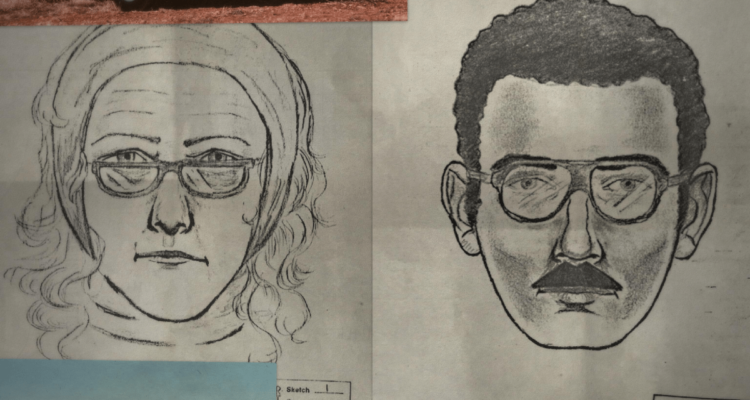Where does a person go when fiction outstrips reality, and the wildest fantasies of even the most bombastic writer can’t hold a candle to what’s found at a dusty estate sale around the corner? Apparently, one dives right back into fiction, or at least the semi-autobiographical kind that a real-life super thief leaves behind as a pseudo confession — that is, if such a thing is to be believed. These are interesting questions, yet director Allison Otto wisely sidesteps any attempt at finding a definitive answer to them in her new doc, “The Thief Collector.” Instead, she focuses on the fascinating-yet-tangled web of deceit, charity, grace, and delicious mystery born out of it.
READ MORE: 2022 SXSW Film Festival: 15 Must-See Film & TV Projects
Otto keeps the movie light, mixing in narration, reenactments, and talking-head interviews to tell a remarkable story with efficient ease. The baseline for it all started in 1985 when a pair of unidentified thieves pulled off a brazen art heist in Tucson, Arizona. It was there that Willem de Kooning’s “Woman-Ochre” made its unscheduled departure from the University of Arizona art museum, only to turn up again quite by accident in 2017, when it resurfaced during an estate liquidation in rural New Mexico.
Things start getting especially interesting from here, raising more questions about the couple who had this painting in their possession and how maybe — just maybe — these milquetoast schoolteachers might have been some of the most dynamic, prolific, and successful thieves in history. Mysteries of this caliber often suffer from a dearth of evidence; in the case of Jerry and Rita Alter, whose 50+ years of marriage accumulated a house full of artifacts, photos, calendars, confessions, and one legendary de Kooning painting, the opposite is true. And while what remains is just short of a definitive answer, it provides enough grist for the mystery mill to keep anyone busy with speculation.
Ms. Otto is deliberate with her documentary, never allowing the fascination surrounding these unanswered questions to glorify or laud what may well be two inexcusably awful people. By that same token, because there’s no conclusive evidence linking the Alters to the actual theft, “The Thief Collector” never goes so far as to pin what might just be a fantastic coincidence on a quirky — but otherwise innocent — couple. Indeed, most of the documentary’s goodwill is rightly aimed at Dave Van Auker, Buck Burns, and Rick Johnson, the co-owners of Manzanita Antiques (which had purchased the Alter estate), who cut through all the legal and financial red tape to just flat-out give the painting back to the University of Arizona.
Still, the mystery is a remarkable one and worth every second “The Thief Collector” devotes to it. Aside from the painting itself, the Alter estate also housed photos and appointment calendars that placed Rita and Jerry in Tucson on the day of the robbery, along with a book of short stories penned by the latter titled “The Cup and the Lip,” which his introduction pegged as, “an amalgamation of actuality and fantasy.” Plagued by hackneyed writing, grandiose self-aggrandizement, and cliché overkill, the collection also lines up with several known or suspected occurrences that warrant a closer look.
One of the stories in this collection, “The Eye of the Jaguar,” appears to describe several key elements of the Tucson heist, but even this seems to be taken with a grain of salt by the doc. Glenn Howerton narrates these “Cup and the Lip” reenactments and appears as Jerry in them (an inspired choice considering Dennis’ “Erotic Life” memoir readings on “It’s Always Sunny in Philadelphia”) — they are portrayed with an exaggerated flair that reminds the audience just how seriously to take these claims (not very). With the Alters both dead and further searches of their property yielding no new leads, the world might never know where the fiction stopped, and the realities of their lives started.
And that’s okay. This story isn’t interesting because of the finality of its particulars, but rather in spite of them. Based on the evidence, it seems likely that Jerry and Rita Alter did pull off a perfect heist, though one can’t be sure. By that same token, it seems likely that this mild-mannered couple did not murder and bury itinerant Mexican laborers in their septic tank (another morsel found in “The Cup and the Lip”), though again, one can’t be sure. Until additional evidence surfaces linking the Alters to more crimes, one can enjoy the central mystery surrounding a theft that resolved itself and saw all interested parties more or less satisfied. Although it might have been nice to dig deeper — for example, a more thorough investigation into the Alter children — Otto and “The Thief Collector” seem to understand that an absence of answers is what makes this particular story so interesting.
With “Woman-Ochre” back where it should be, maybe that’s for the best. After all, it would be a shame to ruin such a good mystery with something so gauche as a definitive answer. [A-]
Follow along for our complete coverage from the 2022 SXSW Film Festival.

